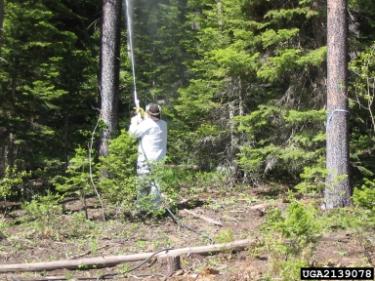Choosing the Right Pesticide
Your woods are unique, and so is your pest problem. So when choosing a chemical solution, you need the pesticide that’s most effective at controlling your problem species in your specific setting. The more targeted your approach, the better your chances of long-term success.
These simple steps can help you find the best possible fit:
- Understand the "enemy". At what point in its life cycle is your pest insect, plant or animal? If dealing with unwanted vegetation, how large is it? Is it annual or perennial? Your answers will factor in to your pesticide choice. For example, contact herbicides, which are applied to plant surfaces and kill through contact, may work well for young weeds or annuals, while perennials may need herbicides that move into the roots and keep the plant from regrowing.
- Map your problem. Make sure you know where your pest problem areas are and how far they extend. An infestation that affects thousands of acres may require a different product than one or two trouble spots, because some pesticides are more suitable for large-scale applications than others. The size of the infestation can also affect the way you apply the pesticides and deciding on which application method is appropriate.
- Consider the terrain. Your soil type, weather conditions and time of year also factor in when using pesticides. Some formulations are more effective in soils with a certain pH, or in sandy or coarser soils than in finer ones. Some work best during certain times of year. Knowing your forest’s cycles and conditions will make choosing and applying your pesticide easier.
- Research your options. Once you’ve narrowed your focus to a handful of pesticide types, it’s tempting to go with the least expensive option. But paying less isn’t always best. Does the product come with a performance guarantee? Does the manufacturer provide extensive customer service and support? The extra peace of mind may be worth some extra up-front cost.
Selecting the most suitable product is important. But what you do with it plays just as big a role in your ultimate success. The right combination of chemical treatments can restore your woods to health, increase timber yields and even improve wildlife habitat, even as it rids your woods of pests.
Previous page
Next page
How can I get more tips?
It’s simple! Enter your email below.

